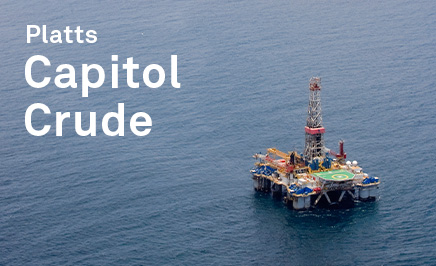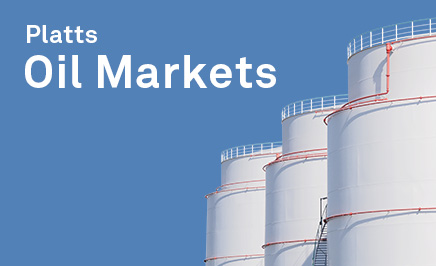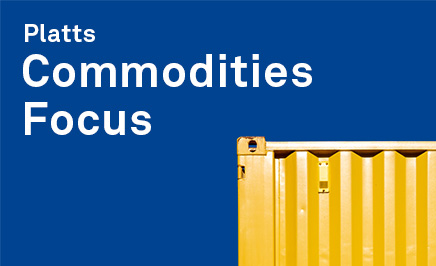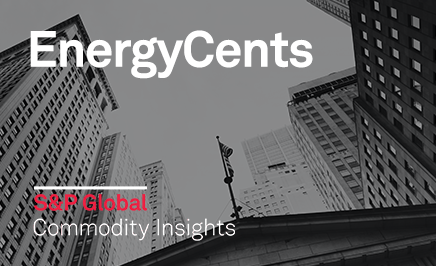Can the Los Angeles-Shanghai green shipping corridor save the sector and the planet?

Can the Los Angeles-Shanghai green shipping corridor save the sector and the planet?
The shipping sector faces a massive challenge in decarbonizing to meet global climate goals.
To accelerate those efforts, leaders at the COP26 climate change conference in Glasgow last year agreed to develop at least six green shipping corridors by 2025 and many more by 2030. The Biden administration has fully supported the plan and is urging private industry to also get on board.
One of the more significant corridors to emerge is between the Port of Los Angeles, the busiest container port in the Western Hemisphere, and the Port of Shanghai, the world's largest port.
Christopher Cannon, chief sustainability officer at the Port of Los Angeles, spoke with senior editor Meghan Gordon about how plans for the Los Angeles-Shanghai green shipping corridor are shaping up.
They discussed the role fuel producers will play and which alternative fuels look most promising. Cannon also gives an update on efforts to ease West Coast port congestion and predicts another possible port backup when Chinese cities emerge from pandemic lockdowns.
Stick around after the interview for Jordan Blum with the Market Minute looking at how workforce issues in the rail sector could affect shipments of oil feedstocks, ethanol, coal, grain and other commodities.
This podcast was produced by Meghan Gordon in Washington and Jennifer Pedrick in Houston.
Maritime sector eyes carbon price on bunker fuels as possible decarbonization solution
CONTAINER QUARTERLY: Shippers look to USEC gateways amid USWC congestion, uncertainty
Saudi Aramco still in engineering phase for ministry-ordered crude capacity expansion
Enduring waves of climate change: Maritime decarbonization, a tempest before the calm
More listening options:

Podcasts
A sharp increase in Ukrainian drone attacks on Russian energy infrastructure has those in the refined products markets looking at the near-term implications for export volumes, trade flows, freight rates and commodity prices. S&P Global estimates that Russian refineries with a combined nameplate capacity of over 1.6 million b/d nationwide have now been affected to some degree by Ukrainian attacks. In this episode of the Platts Oil Markets podcast, Joel Hanley is joined by Tom Washington, Senior Writer, Rebeka Foley, Senior Oil Markets Analyst, and Nadia Bliznikova, Associate Editor, to discuss how the latest developments are impacting related diesel and tanker markets in the region and further afield. Related stories: Interactive: Global oil flow tracker Strike on Russia's Taneco refinery marks leap in Ukrainian drone radius REFINERY NEWS: Russia's Taneco attacked by drones: reports (subscriber content) Related price assessments: AAVBG00 - ULSD 10ppmS CIF NWE Cargo AAWYZ00 - ULSD 10ppmS CIF Med Cargo More listening options: No content (including ratings, credit-related analyses and data, valuations, model, software or other application or output therefrom) or any part thereof (Content) may be modified, reverse engineered, reproduced or distributed in any form by any means, or stored in a database or retrieval system, without the prior written permission of Standard & Poor's Financial Services LLC or its affiliates (collectively, S&P).

Podcasts
Red sea crisis has forced carriers and shippers alike to adjust strategies. Container freight rates not only reached yearly high after receding throughout 2023 but carriers also seized a profit making opportunity they were looking for after the post pandemic lull. The change in this dynamic has forced shippers to again look for alternatives in the hopes of making their supply chain more agile. S&P Global Commodity Insights containers editor Tanya Kalra speaks with Chris Rogers , Head of Supply Chain and Research, S&P Global Market Intelligence, Greg Knowler , Senior Editor, Journal of Commerce and Mohammed Al Ansare , Associate Editor, EMEA Containers, S&P Global Commodity Insights about the changing dynamics in the containers market and how carriers and shippers are navigating through them. Related: Platts Container Rate 1 North Asia-North Continent Feature: Hapag Lloyd, Maersk's Gemini Corp. to shake up maritime alliances in 2025 Delivery of new vessels offsets container market disruption from longer transits Supply Chain Edge: Beyond AI, refrigerator reflation, limited Red Sea scope Rotterdam volume decline a buffer against any Red Sea container surge: CEO More listening options: No content (including ratings, credit-related analyses and data, valuations, model, software or other application or output therefrom) or any part thereof (Content) may be modified, reverse engineered, reproduced or distributed in any form by any means, or stored in a database or retrieval system, without the prior written permission of Standard & Poor's Financial Services LLC or its affiliates (collectively, S&P).

Podcasts
Once a global powerhouse of crude production, the UK’s North Sea region saw its oil output decline accelerate to 12% in 2023, according to official data from the UK’s Department of Energy Security and Net Zero. The new figures come as the UAE’s Taqa revealed to S&P Global Commodity Insights that it plans to cease production at the Cormorant oil fields in 2024, a key component of Brent grade. In this episode of the Platts Oil Markets podcast: Joel Hanley is joined by Nick Coleman, Senior Editor for Oil News, and Sam Angell, Senior Editor covering the North Sea crude market, to discuss the outlook for North Sea oil production and the latest developments surrounding the global oil benchmark Platts Dated Brent. Mentioned in the podcast: Infographic: Dated Brent February update Continue viewing the infographics by subscribing to the S&P Global Platts Connect. Email ci.support@spglobal.com to learn more and subscribe. More listening options: No content (including ratings, credit-related analyses and data, valuations, model, software or other application or output therefrom) or any part thereof (Content) may be modified, reverse engineered, reproduced or distributed in any form by any means, or stored in a database or retrieval system, without the prior written permission of Standard & Poor's Financial Services LLC or its affiliates (collectively, S&P).

Podcasts
Led by the Americas, supply growth from non-OPEC countries fully met the growth in global oil demand in 2023. This balance, along with wars in the Middle East and Ukraine, U.S. elections in November, and changing shipping patterns weigh on the minds of oil strategists in 2024. Aaron Brady and Ha Nguyen join EnergyCents with hosts Hill Vaden and Sam Humphreys to share their thoughts on the biggest events that will shape oil markets in 2024. Learn more about S&P Global Commodity Insights energy coverage at: https://www.spglobal.com/commodityinsights/en More listening options: No content (including ratings, credit-related analyses and data, valuations, model, software or other application or output therefrom) or any part thereof (Content) may be modified, reverse engineered, reproduced or distributed in any form by any means, or stored in a database or retrieval system, without the prior written permission of Standard & Poor's Financial Services LLC or its affiliates (collectively, S&P).